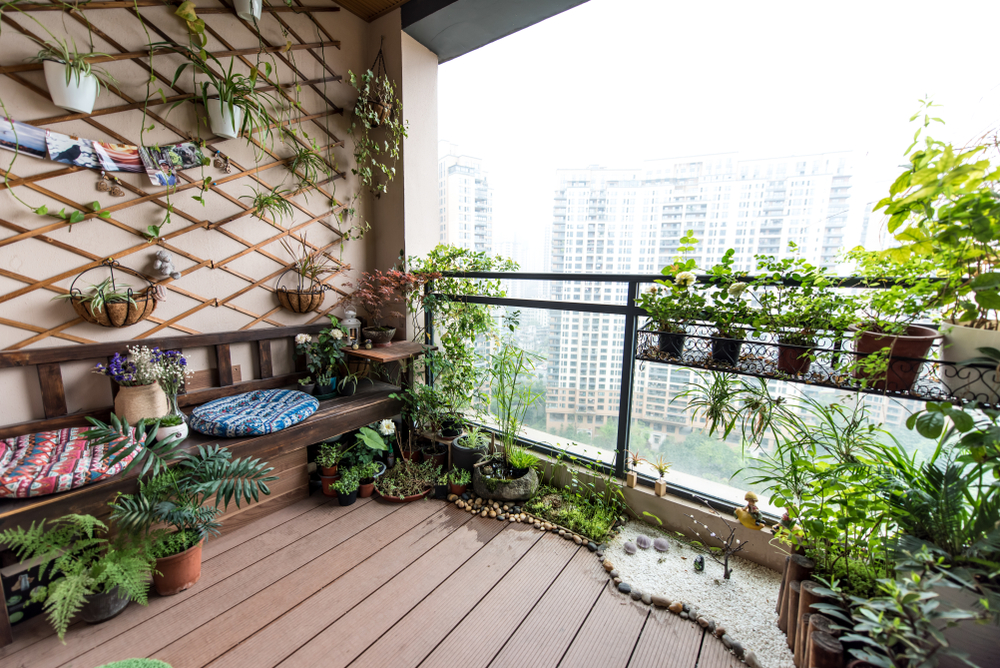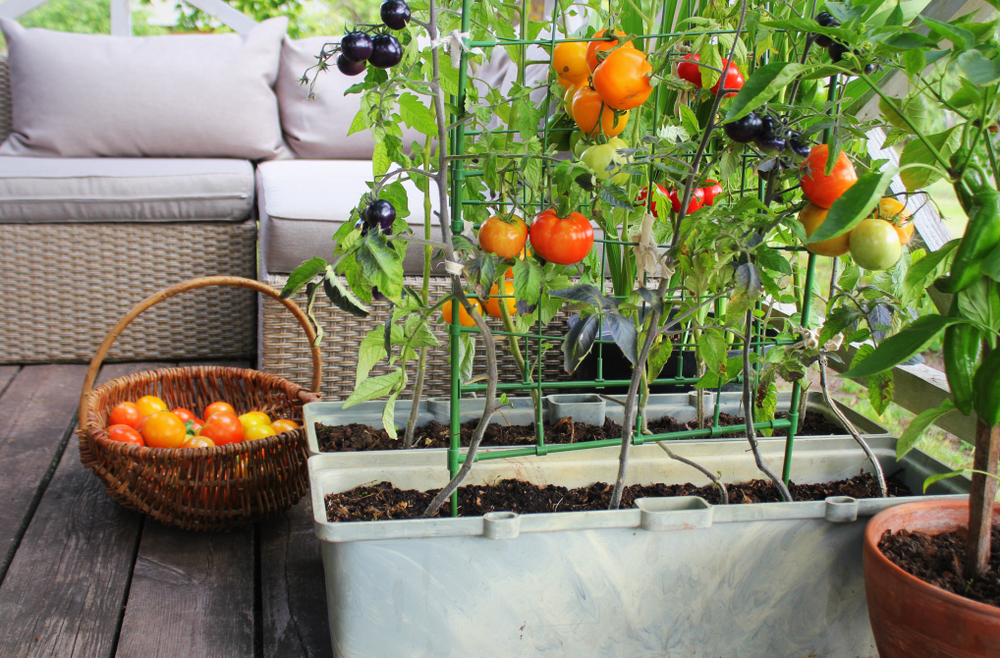You’ve likely seen photos of gorgeous raised garden beds with rows and rows of beautiful vegetable plants. Or a luscious and full flower garden with new blooms all year round. As someone who lives in an apartment, these photos can be discouraging. It can feel like you can’t achieve those beautiful green spaces with what you have, but we’re here to tell you that you can!
Creating a balcony garden can be as simple or as complex as you want it to be. Whether you have a walk-out patio with space for tables and chairs or just a small space to stand, you can transform these spaces into garden sanctuaries. So stop feeling like you have to wait until you have a backyard or more acres; beautiful gardens can come from small spaces too, and here’s how you do it.

Why you should have a balcony garden
Maybe you want a balcony garden to grow flowers, herbs, or some fruits and veggies, but there are some other reasons you should consider as well.
Good for your health
It’s been a long-standing fact that gardening is good for your health. It gets you up and moving, bending, kneeling, reaching, lifting, and other light activities that are excellent for your body. However, what isn’t talked about as often is its effect on the mind. Gardening is often spending time in nature, working with your hands, and caring for a living thing other than yourself. All of these come together to reduce stress, release dopamine, and lower anxiety. So whether you care for 40 plants or just 1, you’re doing your mind and body a good service.
Fresh home-grown food
If you decide to grow some fruits, veggies, or herbs on your balcony, you’ll get the added benefit of fresh home-grown produce. This is not just healthier than purchasing from a store; it’s also immensely satisfying.
Aesthetics
There’s nothing more depressing than walking into a home that doesn’t have any plants. Whether they’re fake or not, seeing a bit of green in a space makes it feel more open and inviting. Living in an apartment can exacerbate this feeling since there are often fewer windows than in a home, and it’s a further walk to get outdoors. You can combat these feelings with a balcony garden. Feeling overwhelmed and cramped in your home? Walk out onto a balcony filled with lush and thriving plants, and we promise you’ll be feeling better soon. Plus, you’ll have lots of photo opportunities for Instagram!

How to optimize your balcony garden
Since we’re working with a smaller space, we’ll have to get creative, but figuring out how to optimize your balcony garden can be part of the fun. We aren’t working with a backyard or acres of land, so each inch is precious space that we don’t want to waste. Luckily, with the rising popularity of balcony gardens, many container gardens are designed to take up little space while still holding many plants. Here are some of the ways you can fit a plant into every corner of your balcony.
Assess your space
Before you go buying anything, you’ll first want to take a moment to assess your available space. Take note of the length of the railing, the height of the walls on either side (if you have them), the floor space, and any other items you’ll want to include, such as chairs or tables. Once you have a good understanding of what you can fit, take a look at the types of planters you can use.
Hanging planters
Hanging planters are excellent options for indoor and outdoor use. For example, if your balcony sits below someone else’s, you can use that “roof” to hang plants. They also come in a wide variety of sizes, shapes, and designs, so you can find one to suit your needs.
Railing planters
You’ve probably seen those planters that sit on a railing. Often homeowners use them to plant flowers on a front porch, but they work just as well on a balcony for whatever plant you want. These are great options for herbs! With railing planters, you could line your whole railing and cover it with stunning greenery. Try a hanging or vining plant, and you could even block out nosey neighbors.
Stacking planters
These types of planters come in a wide range of styles, heights, and purposes. You’ll be able to find one that works exactly how you need it to and save a lot of space doing it. For example, instead of lining pots on the ground, you can sometimes plant up to 50 plants within one of these planters. Many gardeners use them for lettuce or even strawberries.
Wall-mounted planters
If you have a wall separating your balcony from your neighbors, you might benefit from investing in a wall-mounted planter. These can be a single pot or a whole wall of pots like this one here by Richoose Store. Purchase as many as you need and turn an ugly wall into a lush green forest.
Planting benches
While all these nifty planters are well designed and suit many needs, some plants need a more traditional growing space. If you have the space for it, planting benches like this one is self-watering and allows you to grow a broader range of plants.
So don’t get discouraged when you see those hashtag garden goals on Instagram. You can start your own on your balcony and flex that green thumb even without a backyard.
Editors' Recommendations
- A beginners guide on what to grow in your greenhouse for a thriving garden
- Small greenhouse tips: 5 ways to make the most of limited space
- Do you need a fence for your garden? What you need to know before deciding
- What you need to know about growing sugar snap peas in containers
- How to build an outdoor kitchen on a budget and create the ideal cooking space


